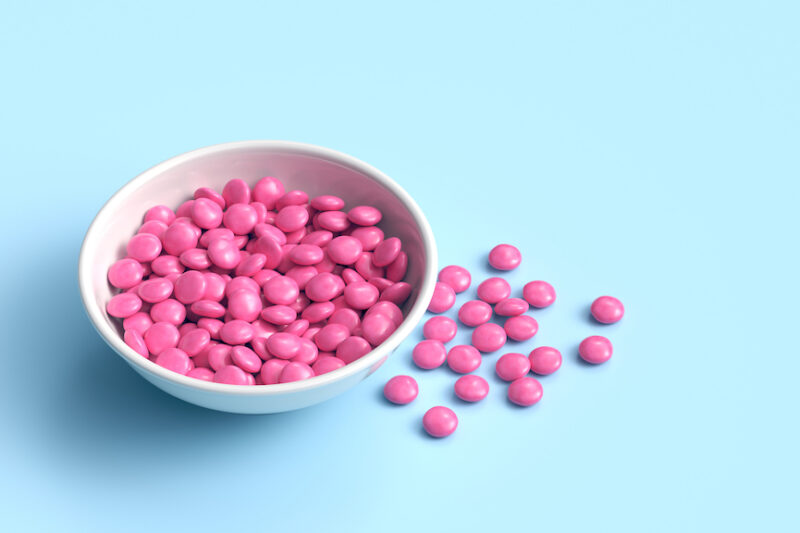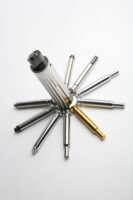Spotlight: Improving production efficiency with tooling that hits a sweet spot

pic: I Holland
While confectionery manufacturing has become ever-more automated around the world, there remain a number of operational challenges to successful production, as Luke Hoskin, I Holland Technical Sales Manager explains, as he casts an eye over the sector
The confectionery industry is a highly competitive market, so implementing manufacturing processes to ensure the production of tableted candy is fast and efficient is essential.
As time and capital implications become drivers within production, investigating how to improve manufacturing methods becomes important, and one area that can substantially impact productivity is to ensure the compression tooling is optimised to give the best performance and durability.
With the global confectionery market size expected to reach $242.53 billion by 2028 at a growth rate of 3.8% ensuring all manufacturing processes are efficient and working correctly is essential.
An important factor to focus on when manufacturing tableted confectionery is the ingredients. Granule that contains high quantities of hard, sharp-edged elements, such as unrefined sugar, or acidic-based elements, can hugely affect compression tooling due to its abrasive properties. These can scratch, wear and impregnate the steel surface of the tooling.

Demanding processes are applied throughout manufacturing, and despite using hardened and tempered tool steel materials, punches and dies used to produce tableted confectionery will be affected.
When the granule being compressed is particularly hard and abrasive, the tooling will wear faster; this can lead to many problems. Adherence of the granules due to pitted and worn surfaces of the punches can cause many problems that will negatively affect production, for example, capping, where the top or bottom of the candy separates horizontally from the main body.
Another common problem found when producing confectionery is the issue of sticking. Sticking is the build-up of granule on the punch tip face and can severely affect the effectiveness of the production run, as well as impacting the quality of the final product. Although sticking in general can be caused by various factors, including environmental conditions, the most likely cause for sticking when producing confectionery is the quantity of sugar, acids or additives such as Sorbitol for example. Due to the physiochemical properties of the hydrogen bonds, when sugar becomes wet and starts to dissolve, it becomes sticky. The high dosage of sugar within the formulation could cause serious issues in production if specialised anti-stick tool compression material is not used.

Steel Choice Selection
The correct choice of tool steel can make a significant impact on production. The tool material must be balanced to give optimum tooling performance and durability. These properties include anti-stick, abrasion and corrosion resistance, compressive strength, hardness and resistance to chipping and cracking. As the main component to interface with the ingredient, punches and dies must be metallurgically robust, particularly in confectionery production as the wrong selection can accelerate wear.
There are many tool steels available, some of which are specifically designed to compress sticky and abrasive granule and include high carbon, high chrome, cold work tool steels. A common choice when it comes to the production of confectionery is tungsten carbide. This material has high hardness values and specific structures which abrade at a much lower rate making it extremely wear resistant. This helps to reduce ringing caused by abrasive wear, and deformation from continuous forces acting on the face of the die bore, extending the life of the compression tooling.
Improve Wear with Tool Coatings
Another consideration to ensure tooling can withstand consistent compression is the coating. Specialised punch and die coatings can have a huge impact on production efficiency. With the correct coating or treatment in place, some of the biggest challenges that can delay production like wear and sticking issues can be prevented.

If selecting a more wear-resistant steel alone is not sufficient, then an enhanced wear-resistant coating should be applied to the tooling. Coating technology has advanced significantly over the years, and when used in conjunction with high quality tooling steel, it can solve many production problems. They allow for better efficiency and output by reducing the requirement for tools to be taken out of production for additional cleaning and maintenance work to remove problematic residue that may cause potential production issues if left untreated.
Knowing the formulation’s content and characteristics will influence what coating is used on the punches and dies. There is a tool coating to suit every requirement, whether that is reducing wear or preventing sticking. Tooling used for compression, for example within the confectionery sector, are predominantly coated using hard chromium. However, more technically advanced manufacturers are moving to alternative coatings as they know the numerous disadvantages of using hard chromium.
When hard chromium is applied to tooling, a certain amount of hydrogen penetrates the substrate, decreasing the steel’s working load by up to 20%. To counter this effect, the plated tools undergo a baking process known as de-embrittlement that reduces but does not eliminate the unwanted characteristic. It is also subject to micro-cracks which can develop during the plating process when the internal stress exceeds the tensile strength of the chromium. These micro-cracks are problematic because they provide a porous route to the substrate that will allow ingredients to attack the steel beneath.
Specialised coatings have been developed which are chromium-rich and applied via an advanced Physical Vapour Deposition (PVD) process. This advanced PVD process creates a very smooth, dense anti-stick coating and eliminates all the negative drawbacks of applying hard chrome.
Finding a coating that will enhance compression tooling’s capacity to be anti-stick, highly wear resistant, strong and durable is crucial for longevity and to lesson production problems. Using the correct tool steel and coatings when producing confectionery is essential for the effective manufacture of confectionery.
Gum Problems
A leading confectionery company was experiencing this problem when producing its gum product. Measuring 8.5 x 7.5mm square, the gum was problematic to produce, with the manufacturer experiencing premature punch tip wear and misalignment between the punches and dies.
The tooling lasted for a maximum of six months. They also faced daily production issues during sugar coating because the damaged punch tip resulted in core erosion, flashing and edge chipping. After investigation from an experienced tool manufacturer, a solution was found.
Although the turret was in generally good condition, the punch sets required an overhaul with a steel and coating combination designed for this particular product. Following the introduction of a new coating on the tooling and the use of a die alignment tool, the manufacturer was able to run production with no issues, improving production times and reducing costs.
Use Tooling for a Sweet Success
The demand for improved productivity while reducing manufacturing costs within confectionery production is important. Compression tooling is one area where manufacturers can make a difference to efficiency and product quality. Selecting the correct tooling material and coating to counteract the typically challenging ingredients found within confectionery is critical to the production’s success.
To find the best solutions to any tableting issues, consult with an experienced tooling manufacturer who has the knowledge and innovation to ensure a problem-free quality end product.



